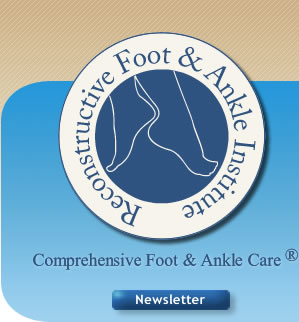Plantar Fasciitis (Heel Pain)
![]() Plantar Fasciitis (Heel Pain) — Dr. Michaels »
Plantar Fasciitis (Heel Pain) — Dr. Michaels »
The plantar fascia is a ligament-like band of tissue that runs from your heel to the ball of your foot. This band pulls on the heel bone, raising the arch of your foot as it pushes off the ground. If the foot flattens out, the distance from the front of the foot to the back of the foot becomes longer. The lengthening of the foot will cause the plantar fascia to pull on the heel and this pulling creates a “tendonitis” or inflammation in the heel called Plantar Fasciitis. Heel spurs form in response to this pulling but do not cause pain. Bursitis is the swelling of a bursa, a fluid filled sac that reduces friction between the ligament and the bone. Bursitis may develop if a swollen plantar fascia presses against a plantar bursa. The heel pain can also come from a pinched nerve in your foot. It takes a skilled doctor to determine what is causing the pain.
It is interesting to note that many heel pain sufferers share the common complaint of intense heel pain upon awakening in the morning. While resting, the foot is not in a weight-bearing position. If there is no pull on the plantar fascia, the fascia shortens and the first step in the morning causes a sharp pull or tear in the plantar fascia. This first step can be extremely painful. The presence of this symptom usually confirms the diagnosis of Plantar Fasciitis.
In approximately 90% of patients, conservative care is all that is required to alleviate painful symptoms. On your initial visit, X-rays are taken to rule out other causes of pain like a broken heel bone. A heel cup may be employed in combination with a foot strapping applied to your foot to help maintain the plantar fascia in a lengthened position. To reduce the inflammation an Anti-inflammatory medication may also be prescribed as well as instruction on how to stretch. On your follow-up visits, night splints, air-heels, and orthotics may be dispensed and cortisone injections given. A night splint is worn while you sleep to prevent the plantar fascia from tightening up, and ultimately, eliminating morning pain. Air-heels are worn throughout the day to cushion and maintain the plantar fascia in that stretched position. Orthotics are custom made devices fabricated to fit your feet, can be worn in most shoes and control heel motion which reduces pain.
If these treatments fail, then Shock Wave therapy or surgery may be indicated.
